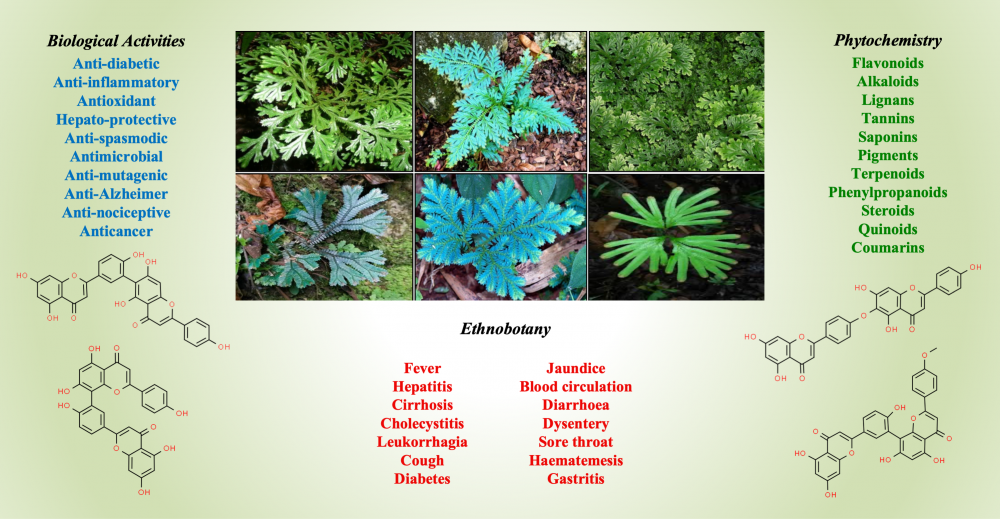JOURNAL 1890
Records of Natural Products
Year: 2021 Issue: 5 September-October
p.330 - 355
Viewed 3323 times.
-
Mohd Adnan

-
Arif Jamal Siddiqui

-
Arshad Jamal

-
Walid Sabri Hamadou

-
Amir Mahgoub Awadelkareem

-
Manojkumar Sachidanandan

-
Mitesh Patel

GRAPHICAL ABSTRACT

ABSTRACT
Different species of the genus Selaginella are exploited for various ethnomedicinal purposes around the globe; mainly to cure fever, jaundice, hepatic disorders, cardiac diseases, cirrhosis, diarrhea, cholecystitis, sore throat, cough of lungs, promotes blood circulation, removes blood stasis and stops external bleeding after trauma and separation of the umbilical cord. Though, high content of various phytochemicals has been isolated from Selaginella species, flavonoids have been recognized as the most active component in the genus. Crude extract and different bioactive compounds of this plant have revealed various in vitro bioactivities such as, antimicrobial, antiviral, anti-diabetic, anti-mutagenic, anti-inflammatory, anti-nociceptive, anti-spasmodic, anticancer and anti-Alzheimer. However, more studies into the pharmacological activities are needed, since none of the professed bioactivity of this plant have ever been fully evaluated. Therefore, this review aims to discuss the evidence-based ethnomedicinal and ethnopharmacological uses, phytochemicals and bioactive potential of Selaginella species. It will provide an updated knowledge for ethnobotanists, ethnopharmacologists and other scientific communities to rethink over the possible usage of Selaginella in medicine. Moreover, further explorations are needed to formulate a novel medicinal product from Selaginella extracts for the improvement of human health, together with toxicity evaluations, necessary to ensure about the safety of these medicinal lycophytes.
KEYWORDS- Selaginella
- chronic diseases
- anti-Alzheimer
- anti-diabetic
- ethnobotany
- phytochemistry